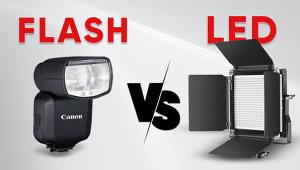an exotic vacation than you should definitely buy a Canon video camera as it is reliable and it helps you to take some great pictures.
mba papers
Nikon’s Capture NX 2; A Good Raw Editor Just Got Better
The original Nikon Capture NX could be compared to a four-cylinder vehicle: it would take you where you wanted to go when it came to raw conversion of Nikon NEF files, but it wasn’t the best ride for image editing. Compared to that, the newly released Capture NX 2 can be described as a six-cylinder roadster—sleek, yet powerful enough for a long drive. The additions and changes add some necessary touches, but does the updated software go far enough to make this a muscle car?
 |
Key Controls
The original Capture NX incorporated Nik Software’s proprietary U Point technology, which uses control points (as found in the new Viveza plug-in). Control points give you a convenient means of controlling image attributes in a more intuitive and user-friendly manner. They do away with the need to painstakingly make masking selections, although that capability does exist here in some fashion.
Essentially, the original NX provided control points that governed selected image parameters, namely black point/white point, color, neutral, and redeye. Color control points are the most versatile. As the online help guide explains, “each color control point…identifies the characteristics of the color as well as the level of detail of that object.” In other words, you can make targeted adjustments centered on that point. And control points feather outward beyond a user-defined sphere of influence. These control points in turn control one or more attributes—brightness, contrast, and saturation (among others) in the case of color control points. But that was the extent of control points. In other words, NX was running on only four cylinders.
 |
|
|
|
 |
Enhanced Control Points
Enter Capture NX 2. It takes control points to the next level. Pick an adjustment or filter from the menu, and you can apply what’s called a selection control point. These come in plus and minus flavors: plus to apply, minus to protect the area. And now we’ve just ramped up our vehicle with an extra two cylinders. These plus/minus selection points largely target similar colors.
Okay. So, if I wanted to do a black and white conversion to only select parts of the picture, I’d first select this black and white filter option and then apply plus selection control points to those parts of the picture I’d want to convert to black and white, leaving most of the image in color. Or if I wanted only selected portions of the picture in color, I’d apply minus selection control points to those areas, after activating the black and white conversion filter. If you want to limit the intensity of the effect, use the Opacity slider. You can do the same thing with practically any parameter in the Adjust or Filter menu. In fact, it came in handy when controlling local tonalities and contrast in some pictures (using the Adjust/Light settings under D-Lighting, Contrast/Brightness, or Levels/Curves).
You can further use minus control points to limit the reach of color control points that need to be reined in. This way, you can prevent the effect from bleeding into areas where it’s not wanted.
 |
|
 |
|
|
Edit Lists
Editing within Capture NX 2 is nondestructive (the original image lies underneath all those changes) and each step is stored in a history panel called the “edit list,” in chronological order. This allows you to backtrack to any point and make any necessary adjustments. What’s more, you can save numerous snapshots—or versions—so rather than undoing a series of steps, simply return to a saved version. The edit list and snapshot versions are only saved with NEF files, but remain on screen in any NEF, TIFF, or JPEG image being processed.
- Log in or register to post comments


































